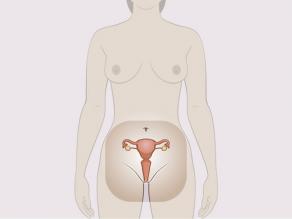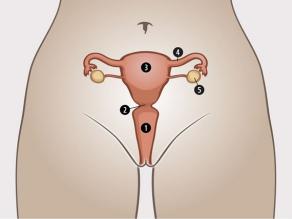Woman’s internal sexual organs
The sexual organs inside a woman’s body (internal sexual organs) are:
- vagina;
- cervix;
- uterus;
- fallopian tubes;
- ovaries.
The woman also has pelvic floor muscles in the bottom of her belly. They are not sexual organs but are important to a woman’s sexual wellbeing and sexual pleasure.
Vagina
The vagina is a tube-shaped passage leading from the outside of the body to the entrance of the uterus (cervix). It is about 10 cm deep.
The vagina has elastic walls lying close to each other. The walls can tighten (making the opening smaller) or relax.
During her menstrual period a woman loses blood through her vagina.
At the entrance of the vagina is the hymen, a supple rim of tissue.
During sexual intercourse, the penis enters the vagina (penetration).
Babies are born through the vagina during a natural delivery.
Cervix
The cervix is a passage leading from the vagina to the uterus.
The cervix is usually closed and opens up during delivery.
It is best for a woman to have a smear test of the cervix from the age of 25 if she has already had sex (sexual intercourse). This smear test serves to discover diseases, such as cervical cancer, or sexually transmitted infections (STIs), such as HPV.
Uterus
The uterus has the size and shape of an upside-down pear.
The uterus grows during pregnancy together with the baby. After delivery the uterus returns to its normal size.
Fallopian tubes
The woman has 2 fallopian tubes, one on each side of the uterus.
A fallopian tube takes an egg cell from the ovary to the uterus.
Ovaries
The woman has 2 ovaries. Each ovary is connected to a fallopian tube.
The ovaries store the woman’s egg cells. When she is born, she already has all her egg cells.
The ovary is the size of a strawberry.
The ovaries are important producers of female hormones. These hormones influence for example the skin and bones and tell the body how to prepare for pregnancy. During the menopause a lack of these hormones can cause mood swings and hot flushes.


